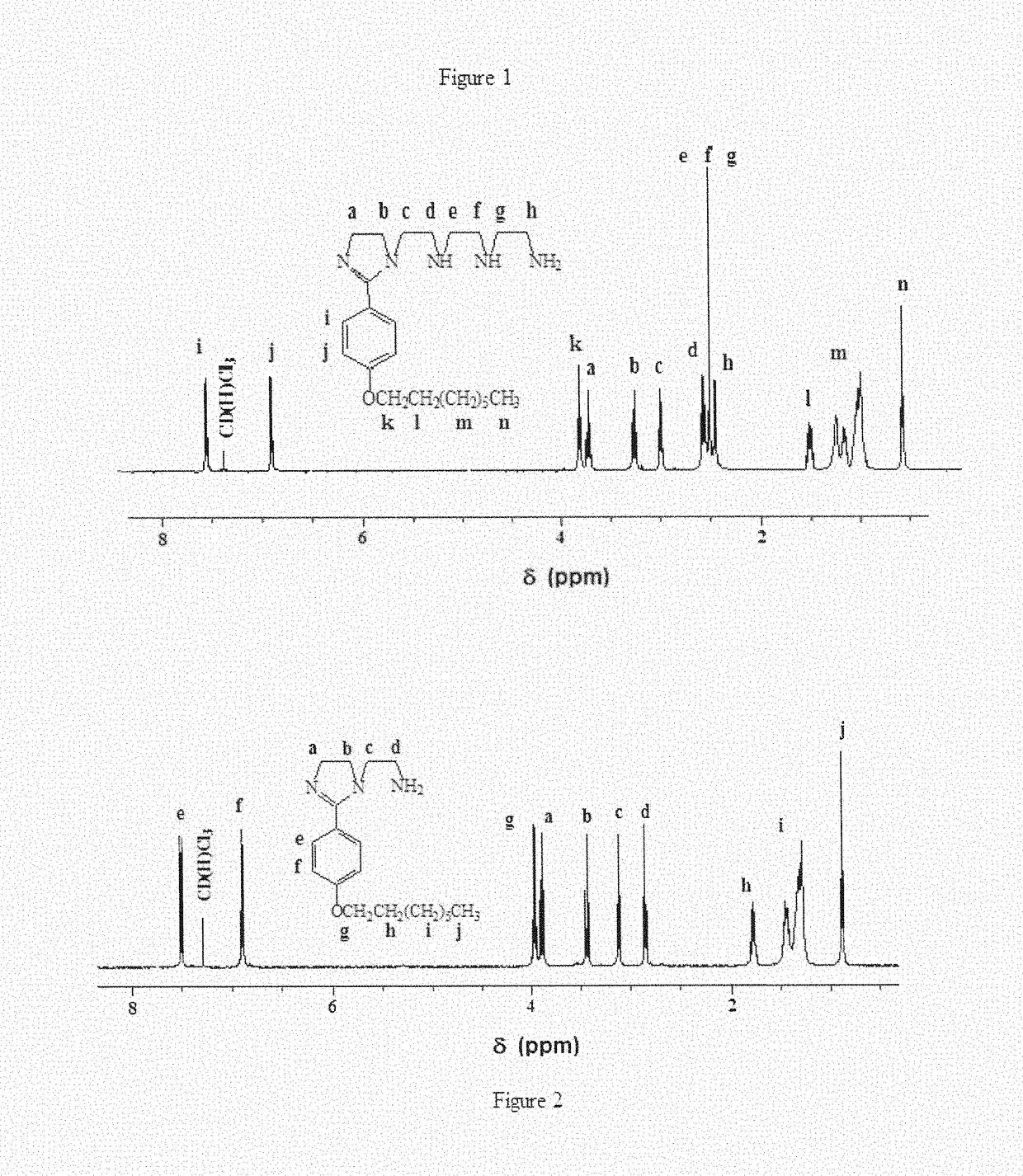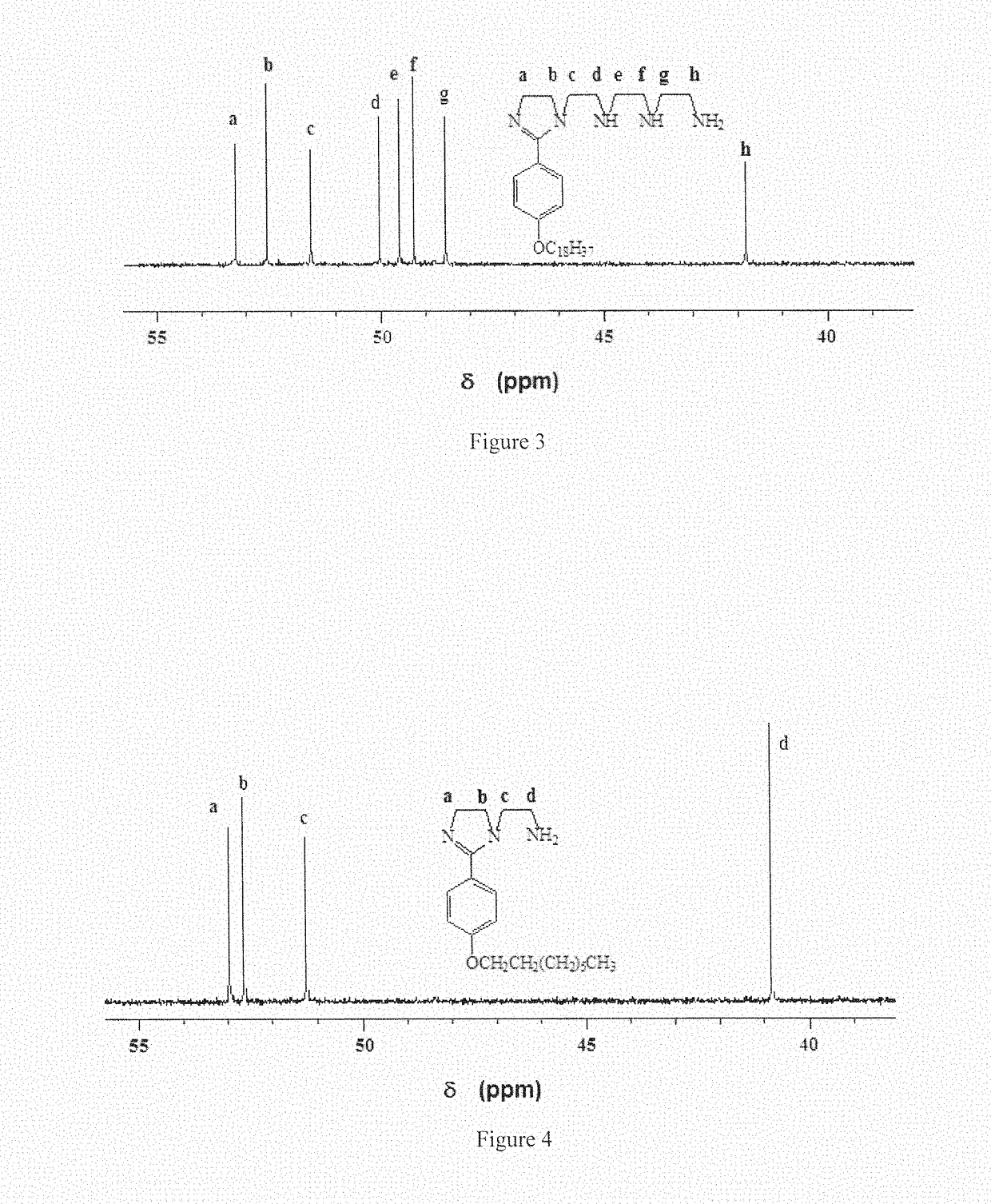2-(p-alkoxyphenyl)-2-imidazolines and their use as corrosion inhibitors
a technology of imidazoline and alkoxyphenyl, which is applied in the field of synthesis and preparation of imidazoline compounds, can solve the problems of metal corrosion having a detrimental effect on the metallic surface, affecting the economic benefits of oil and gas industries, and compromising, or even destroying, many metals, etc., and achieves the effect of suppressing the anodic reaction of the metal corrosive process
- Summary
- Abstract
- Description
- Claims
- Application Information
AI Technical Summary
Benefits of technology
Problems solved by technology
Method used
Image
Examples
example 1
[0199]Materials
[0200]Diethylenetetramine (DETA) (99.5%) and tetraethylenepentamine (TEPA) (˜60% purity) were obtained from Aldrich Chemicals. TEPA was purified as described before [M. W. S. Jawich, G. A. Oweimreen, S. A. Ali, Heptadecyl-tailed mono- and bis-imidazolines: A study of the newly synthesized compounds on the inhibition of mild steel corrosion in a carbon dioxide-saturated saline medium, Corros. Sci. 65 (2012) 104-112. Incorporated herein by reference in its entirety.] p-Hydroxybenzoic acid (I), cysteine hydrochloride, bromoalkane [R—Br (II)] and SOCl2 from Fluka Ag (Buchs, Switzerland) were used as received. All solvents were of reagent grade.
[0201]
[0202]Physical Methods
[0203]All m.p.s are uncorrected. IR spectra were recorded on a Perkin Elmer 16F PC FTIR spectrometer and 1H and 13C NMR spectra were measured in CDCl3 using TMS as internal standard on a JEOL LA 500 MHz NMR spectrometer. Elemental compositions were determined with an Elemental Analyzer (Carlo-Erba: Model ...
PUM
| Property | Measurement | Unit |
|---|---|---|
| temperature | aaaaa | aaaaa |
| temperature | aaaaa | aaaaa |
| temperatures | aaaaa | aaaaa |
Abstract
Description
Claims
Application Information
 Login to View More
Login to View More - R&D
- Intellectual Property
- Life Sciences
- Materials
- Tech Scout
- Unparalleled Data Quality
- Higher Quality Content
- 60% Fewer Hallucinations
Browse by: Latest US Patents, China's latest patents, Technical Efficacy Thesaurus, Application Domain, Technology Topic, Popular Technical Reports.
© 2025 PatSnap. All rights reserved.Legal|Privacy policy|Modern Slavery Act Transparency Statement|Sitemap|About US| Contact US: help@patsnap.com



